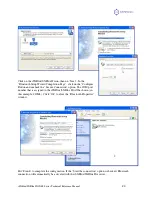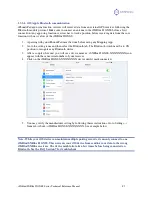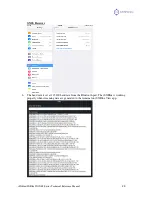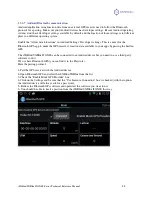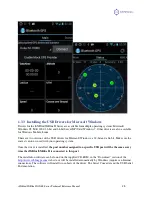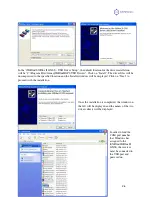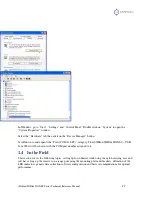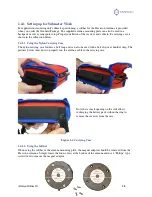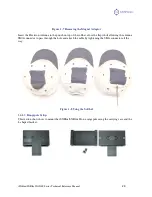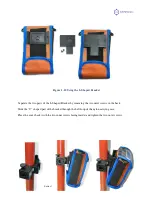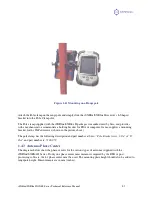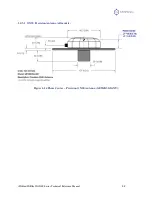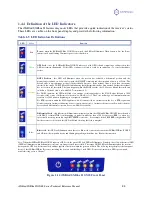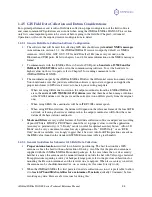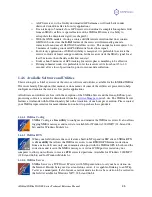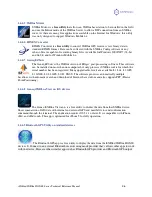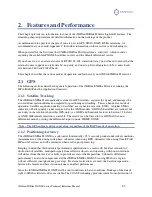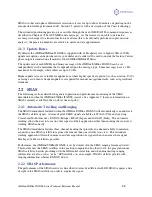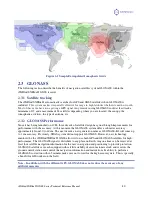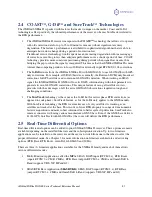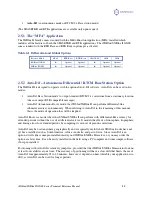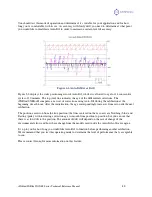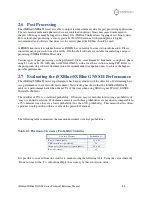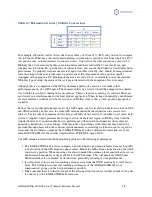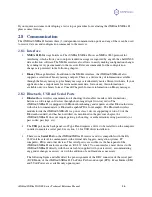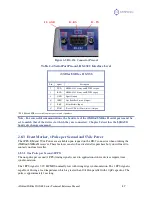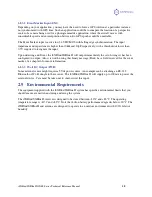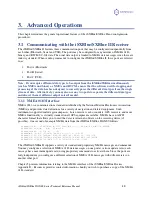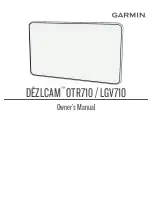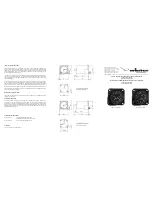
iSXblue/SXBlue II GNSS Series Technical Reference Manual
34
1.4.5 GIS Field Data Collection and Datum Considerations
For optimal performance and results of field data collection, proper configuration of the field software
and some common GPS guidelines are essential when using the iSXBlue/SXBlue II GNSS. This section
only lists some important points to be aware of before going to the field but Chapter 3, Advanced
Operations, will cover the required receiver configurations in detail.
1.4.5.1 Generic Field Data Collection Software Configuration
•
The software that will be used for collecting GPS data should accept
standard NMEA messages
.
As mentioned in section 1.3.1, the iSXBlue/SXBlue II receivers output by default six NMEA
sentences: GGA, GSA, GST, GSV, VTG and ZDA all at 1Hz (once every second) on the
Bluetooth and USB ports. Refer to chapters 3 and 4 for more information on the NMEA messages
format.
•
To communicate with the iSXBlue II via its Serial or USB port,
a baud rate of 57600 and for
SXBLue II GNSS 19200
must be set in the communicating software. To set the baud rate to
higher values on these two ports, refer to Chapter 5 for sending commands to the
iSXBlue/SXBlue II GNSS.
•
The coordinates output by the iSXBlue/SXBlue II follow the differential correction source datum.
You should make sure that your data collection software is up-to-date, supports and applies the
proper transforms to GPS data it receives to match your existing map data.
-
When not using differential correction, the output coordinates from the iSXBlue/SXBlue II
are in the
current GPS WGS84 (G1674) datum
(note that there have been many evolutions
of the WGS84 datum over the years and the current revision differs greatly from the original
one).
-
When using SBAS, the coordinates will be in ITRF 2008 current epoch.
-
When using RTK corrections, the datum will depend on the reference frame of the local RTK
network, or if using a base/rover configuration, the output coordinates will follow the same
datum of the base station coordinates.
•
Masks and filters
are very useful features of field data collection software and prevent recording
of poor GPS data. HDOP or PDOP limits should be set to proper values to suit the application
(accuracy vs. productivity). A “3D only” mode is useful for optimal accuracy but an “Allow 2D
Mode” can be very convenient in some forestry applications. If a “DGPS Only” or an “RTK
Only” mode is available, we strongly suggest that it be used. Also for RTK operations a mask on
the RMS value (found in the standard GST NMEA sentence) offers great benefits.
1.4.5.2 General Guidelines for Submeter GIS Field Data Collection
•
Proper antenna location
is critical for sub-meter positioning. The best location for a GPS
antenna is above the head with no obstruction of the sky. A soft hat for the precision antenna is
supplied with the iSXBlue/SXBlue II standard packages. In the case where the use of a security
hardhat is a must, the antenna can be mounted inside or outside the hat with Velcro type material.
For applications requiring a survey or backpack range pole, refer to the previous subsections for
mounting the Precision Antennae and the receiver on a rangepole. When less accuracy is needed,
the antenna can be shoulder-mounted (ex. on a cruising vest for some forestry work).
•
When the iSXBlue/SXBlue II is first powered in a data collection session, it is preferable to allow
it to
track GPS and SBAS satellites for a minimum of 5 minutes
(ideally 10 minutes) before
recording any data. Here are a few reasons for doing this:

